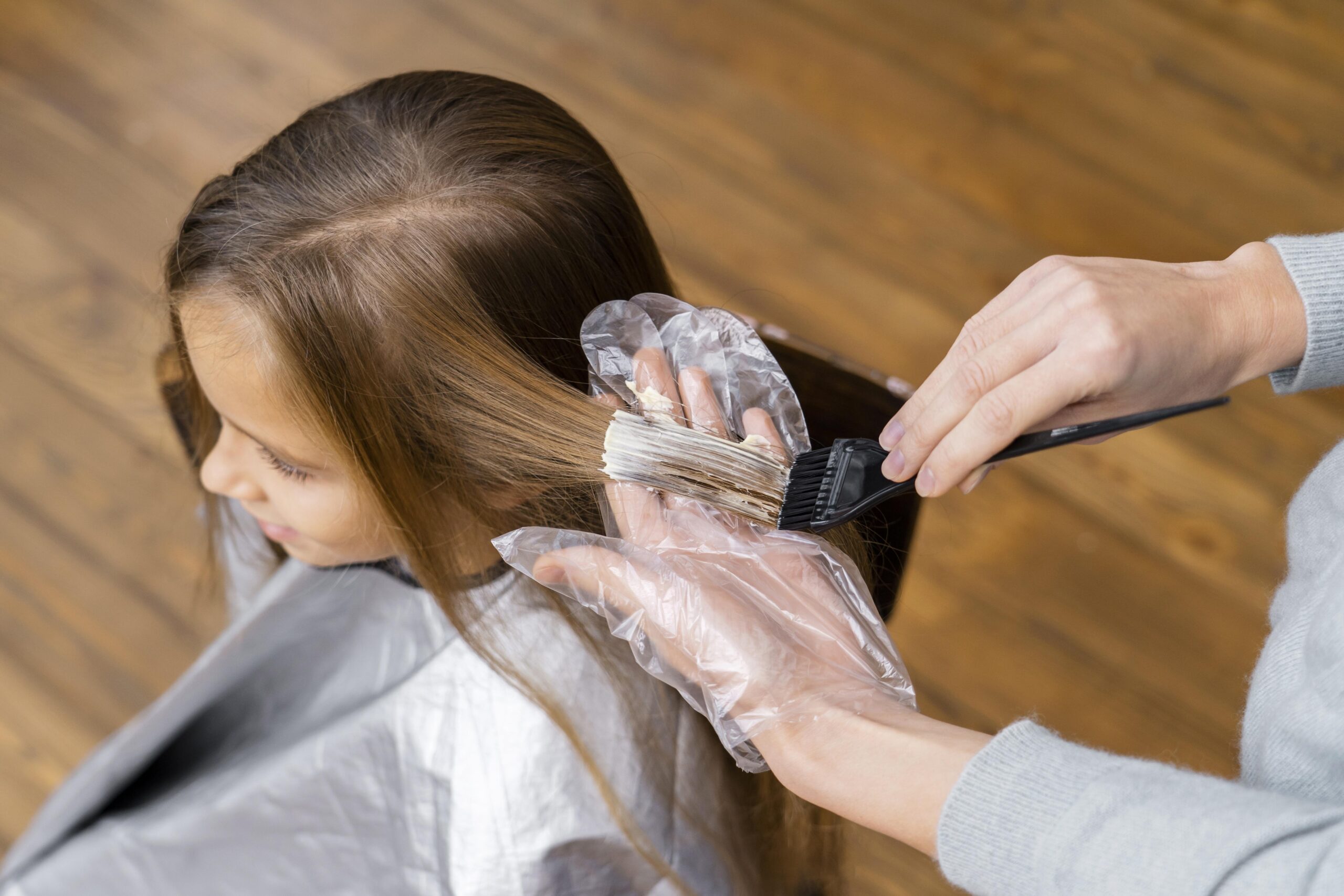Last Updated on: 17th September 2023, 12:57 pm
Hair dyeing has become an important part of our beauty routine to hide grey hairs, boost confidence or showcase our personalities.
Although many people dye their hair all the time, many don’t actually know what hair dyes do to their hair.
For example, we may wonder why do some dyes have a harsh smell coming out of the bottle while some don’t? How do some chemicals like bleach strip away dark hair colours and why does everyone’s hair turn out a different colour even though the same colour is applied?
With all these questions, let’s see how permanent hair dyes actually work.
Ammonia is used to first break down the hair cuticle
If you assume that hair dyes just stain your hair, that is not true, especially for permanent hair dyes with ammonia in it.
These hair dyes work by breaking through a couple of barriers in the hair shaft. Once they’ve broken through the hair cuticles which is the layer of protection for the hair, this will allow other molecules to be sent through the hair to change your hair colour.
Hair dyes use hydrogen peroxide to strip away your current colour
Depending on how light you are going and how dark your natural hair colour is before the hair dye session. The stylist will consider the strength needed for the peroxide, otherwise known as bleach — to be used to remove the current colour of your hair.
Peroxides are known as “oxidative hair dye” and are commonly used as the activator for most hair colours.
They usually come in 10, 20, 30 or 40 volumes which refer to the percentages of peroxide in the activator. The lower the volume, the less damaging it will be to your hair.
Hair lightening or bleaching differs from permanent hair dye as this works by opening up the hair shaft. This is so that colour can enter but bleaching is done to remove as much pigment as necessary.
Once hair bleaching is done, semi-permanent hair dyes are used to get the vibrant colours that are in trending now.
Compared with using permanent hair dyes only, bleaching with hydrogen peroxide is damaging because it is not a smart molecule.
This molecule has a tendency to go after melanins which is the pigment in your hair and keratin at the same time which is the protein that makes up the hair fibre.
This is why hair damage can be seen whenever bleach is used on the hair as it cause both a physical and chemical disruption.
Ammonia-Free Dyes still remove your hair cuticle
In ammonia free color, monoethanolamine (MEA) is used and it works by remaining in the hair. This will end up causing continuous damage to the hair and studies have shown that its effects on hair are more damaging than ammonia.
These products also give you a much weaker colour as MEA is made of a larger molecule than ammonia and doesn’t swell the hair as much (which is crucial for colour penetration).
Therefore, if the colour does not penetrate as much, this also means that the hair colour will not last as long!
The Longer the dye sits in your hair, the more damaging it is
Most people don’t realize this but most hair dyes have a built-in timer. After a certain point, the colour stops working in the hair.
Bleach works differently and it is where the most damage occurs. This is because as long as bleach continues to sit in the hair, it continues working to remove the pigment and keratin in your hair.
The main goal of bleach is to remove your hair colour to a desired level of lightness while maintaining most of your hair health which can be a tricky thing to do.
If left too long, not only will it cause weakened hair but your hair will break off which can cause hair loss especially if you have a sensitive scalp.
Temporary dyes or semi-permanent dyes must be used after bleaching as it is not advisable to go through another process of emptying and filling the hair with colour molecules over and over again.
Some people may develop allergic reactions
A healthy scalp is important to have overall healthy hair growth. Therefore hair dyes can cause skin irritation on the scalp if it is done too frequently.
For others, it can also cause allergic reaction on other parts of the body.
Allergic reactions include itchy skin, rashes, swollen eyes, lips, hand and feet, feeling lightheaded, difficulty breathing and swallowing.
A severe allergic reaction can include tummy pain, nausea and vomiting, collapsing and becoming unconscious.
How to protect your hair after a hair dyeing session?
1) Include a protein hair treatment in your weekly haircare regiment
There are plenty of products out there that you can use at home or visit salons to get a hair treatment to fill your hair with the necessary nutrients and replenish the lost proteins from bleaching.
2) Wash your hair less often
This is applicable especially for people who went through a bleaching process, it is important to keep your natural oils in your hair as it is the best way for it to naturally moisturize.
You hair becomes a lot drier after a bleaching process therefore, you can invest in good quality dry shampoos to skip washing days to ensure your hair remains hydrated to avoid further breakage and damage.
3) Eat good quality protein
It is important to eat foods that are high in protein to maintain the health of your hair as hair is made mostly from protein.
The best foods you can consume are eggs and fatty fish as these foods have healthy fats that will help replenish moisture in your hair as well.
Conclusion
Permanent hair dye works by removing natural colour from the hair that you can never put back. After breaking through the hair cuticle, it fills it up with artificial colour and closes it up after the colouring process is completed.
In contrast, semi-permanent colours only penetrate partially into the structure, with most of the dye molecules staying outside on the surface. Semi-permanent colours don’t go inside at all and stay on the surface.
It is also important to give yourself a break from dyeing your hair to avoid hair damage as one of the causes of hair fall in Singapore is caused by over-coloring.







